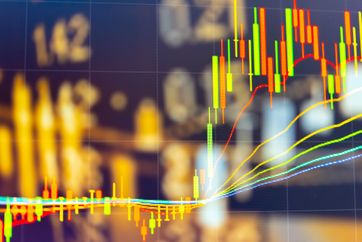US Equities entered the third quarter strong, buoyed by widespread bets on a soft economic landing and pivot by the Federal Reserve. However, as we progressed through the dog days of summer, investors quickly began to take their chips off the table, reacting to hotter than expected economic data and hawkish rhetoric from the Fed. The realization of prolonged higher interest rates than initially anticipated permeated the market, leading to the first substantial selloff since the banking crisis earlier in the year.
Nearly all sectors felt the impact, with Energy being the notable exception after oil prices climbed towards $95 a barrel following OPEC+ production cuts. Energy (+12.2%) was the top performing sector while interest rate sensitive areas like Utilities (-9.2%) and Real Estate (-8.9%) suffered the most. Mega cap names, whose outsized weight in major indexes can mask strength and weakness in the broader market, dragged down index returns for the quarter. This marked a distinct departure from the storyline of the first half of the year when these mega-cap stocks carried the market higher. The S&P 500 fell 3.3%, the Nasdaq dropped 3.9%, and the Dow Jones Industrial Average lost 2.1%.
In Fed news, Jerome Powell & Co. increased rates by 25bps in July before pausing and maintaining them at 5.5% in the meeting just a few weeks ago. What surprised investors was the updated interest rate projections, famously known as the dot plot. The revised dot plot unveiled that the majority of voting members foresee one more interest rate hike this year, signaling a commitment to maintaining these heightened rates for an extended period before contemplating any potential cuts. This stance diverged sharply from the expectations of many market participants who had been anticipating rate cuts, injecting an element of concern into the equity outlook.
The Federal Reserve's decision to keep rates elevated, even opting for hikes, aligns with the backdrop of economic data outperforming expectations, especially in the service sector, while grappling with persistent inflation. Despite a recent downward trend in inflation, the latest readings indicate a stall in that decline. In fact, inflation witnessed its most substantial increase of the year last month, with the CPI up by 3.7% from a year ago. The Fed remains committed to bringing that figure closer to the 2% mark.
Shifting our attention to the labor market, signs of a slowdown are becoming evident, as the unemployment rate increased by 0.3% to 3.8%. Still, job openings remain plentiful, and wages are increasing. Notably, the Institute for Supply Management's (ISM) manufacturing index remains entrenched in contraction territory for the 10th consecutive month, presenting a contrasting picture to the expanding trend observed in the services sector. The intricate interplay of these economic indicators paints a nuanced picture of the uncertainty facing investors in this dynamic market landscape.
Domestic equities posted another strong performance on the index levels as mega-cap, growth, and AI related names fueled a rally. Throughout this year, the index has been driven in large part by the most heavily weighted names by market capitalization as they contributed nearly 11% of the 14% YTD returns on the S&P 500. For the second quarter, the tech-heavy Nasdaq rose 12.8% compared to the S&P 500’s gain of 8.3% and the Dow Jones Industrial Average’s gain of only 3.4%. To further the point, 8 of 11 sectors underperformed the S&P 500 as Technology (+16.9%), Consumer Discretionary (+14.3%), and Communications (12.8%) were the only outperforming sectors. By contrast, Utilities (-3.3%), Energy (-1.8%) and Consumer Staples (-0.2%) were the biggest laggards.
At the latest Fed meeting a few weeks ago, the committee voted on their first pause in interest rate hikes after ten consecutive increases. Inflation has fallen rapidly to 4%, although that level remains well above the central bank’s target. The Fed has expressed a wait and see approach to lessen the risk of a larger slowdown given the lag effect in monetary policy. Given that economic data continues to surprise to the upside, supported by the services sector, it is very likely that rate hikes, not cuts are the base case for the rest of the year which makes the recent decision a “hawkish pause”.
Other economic developments: Manufacturing PMIs remain in contraction territory since the end of 2022. Q1 GDP growth was revised up to 2%, substantially more than the previous 1.3% estimate. The unemployment rate increased to 3.7% from 3.4%.

